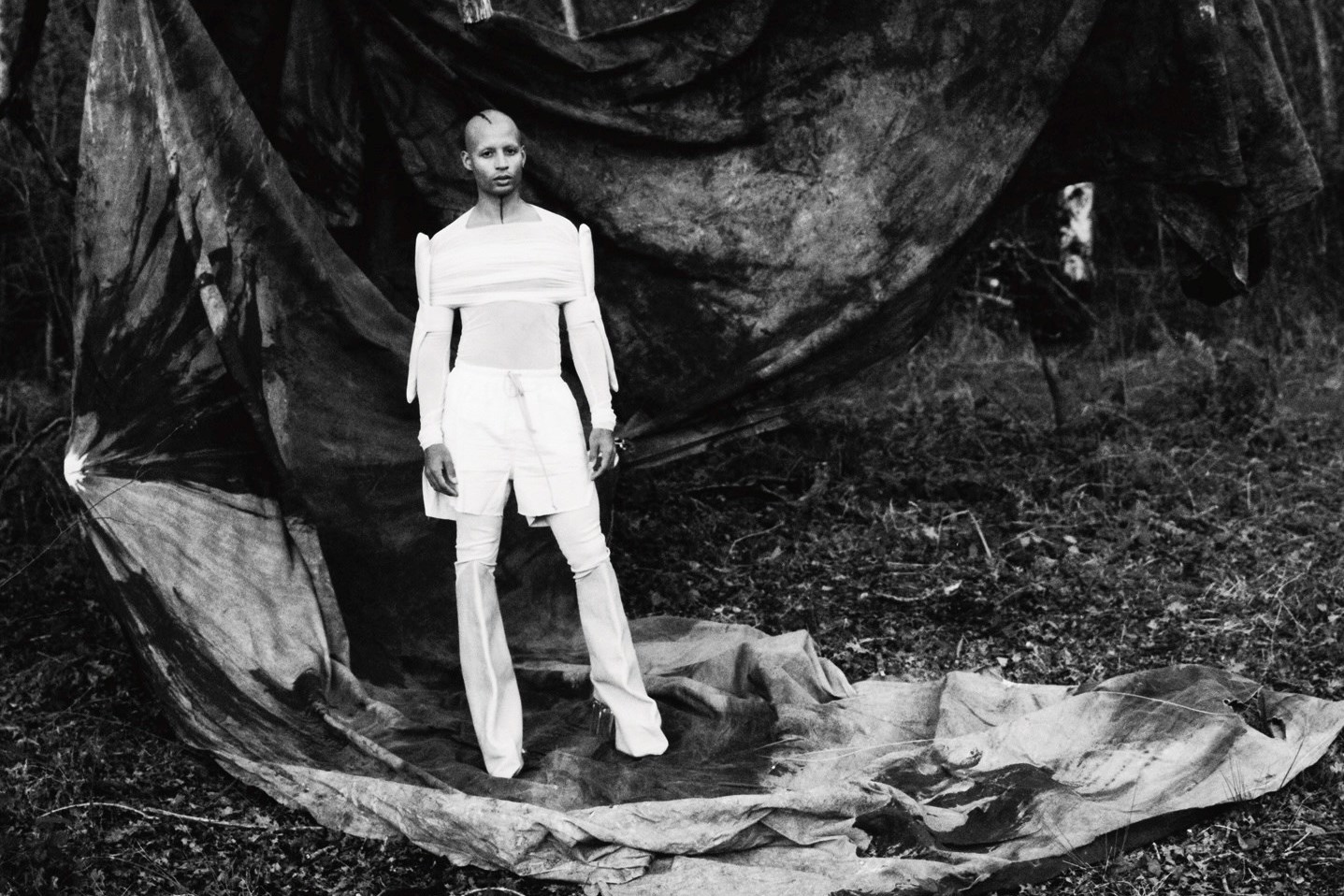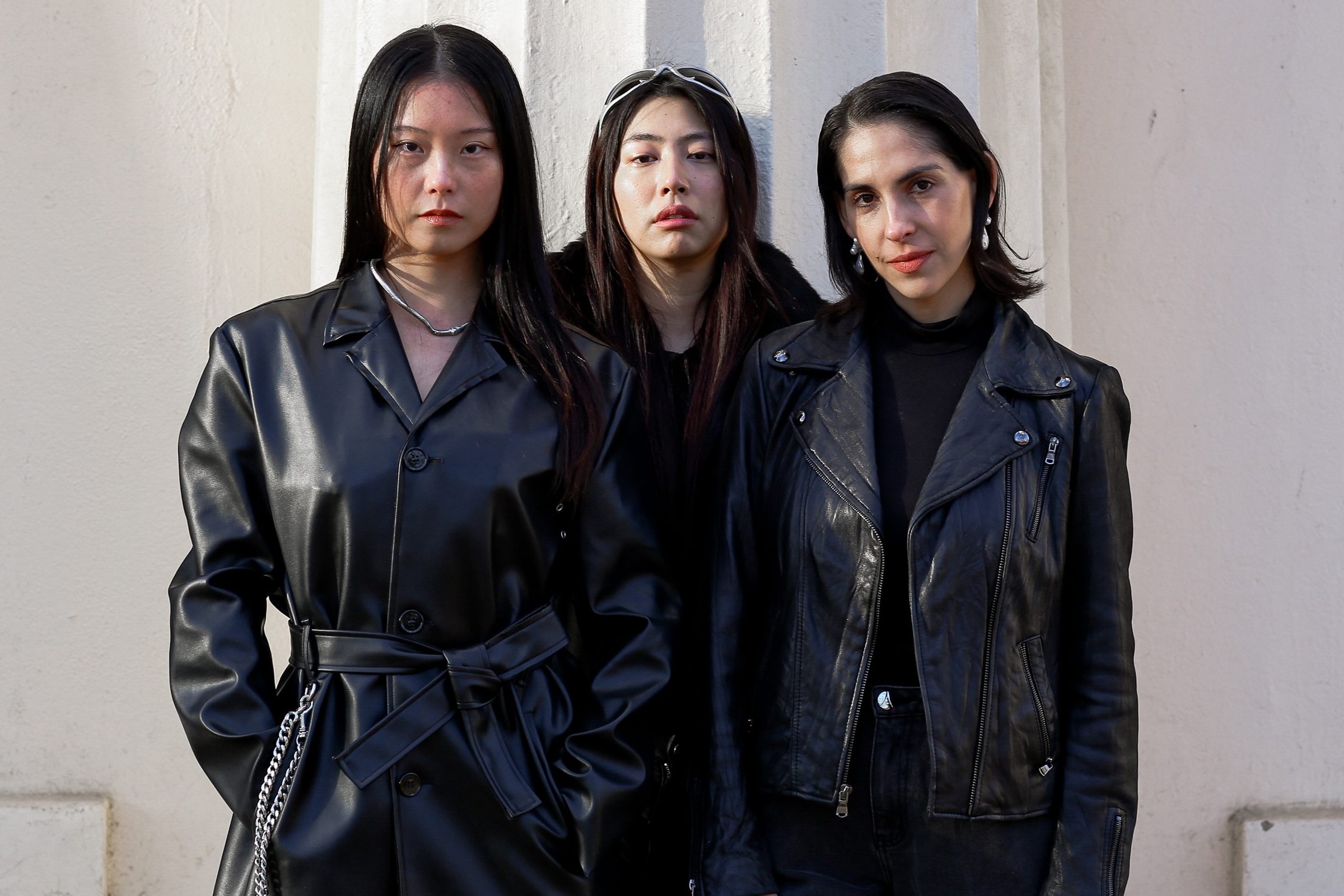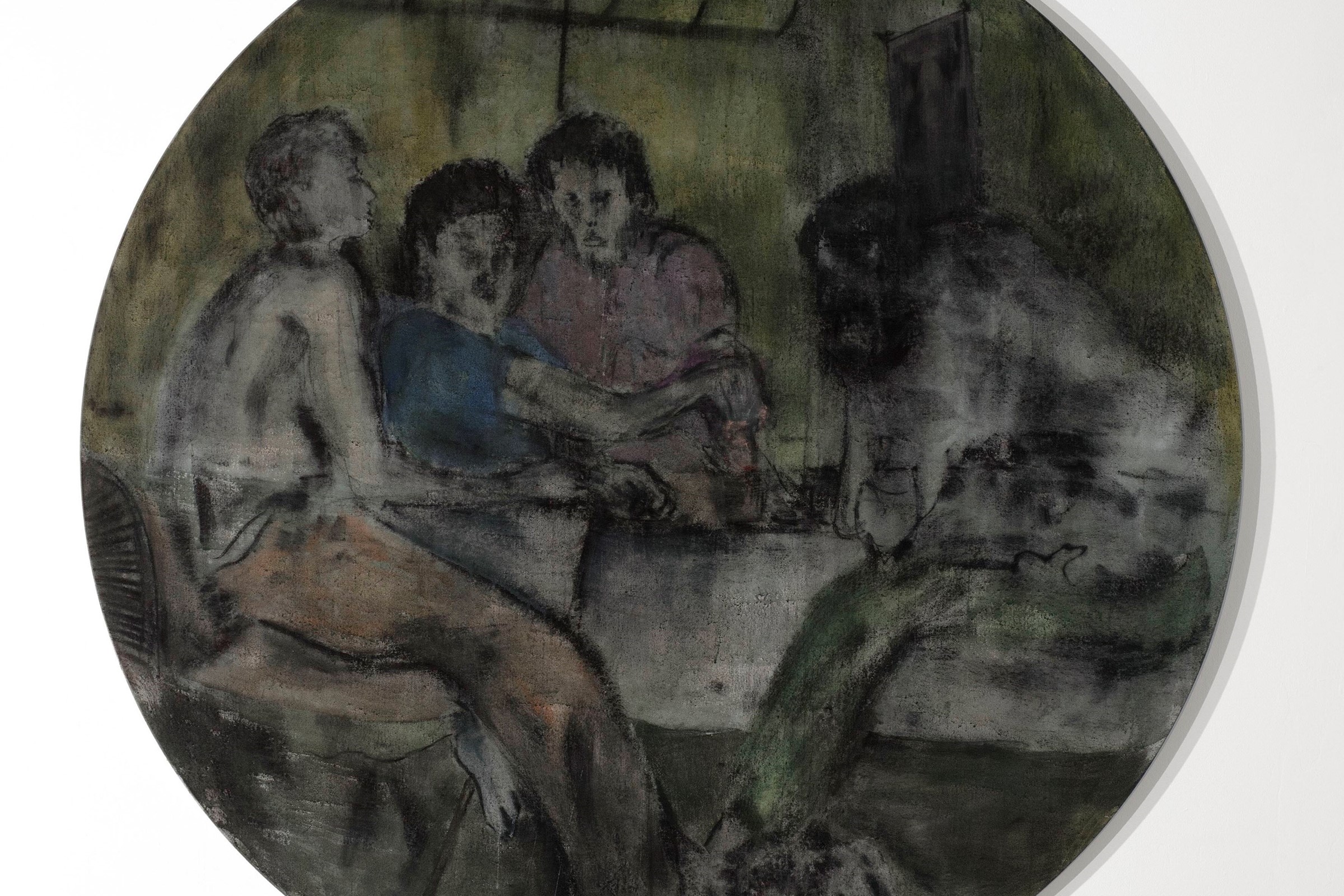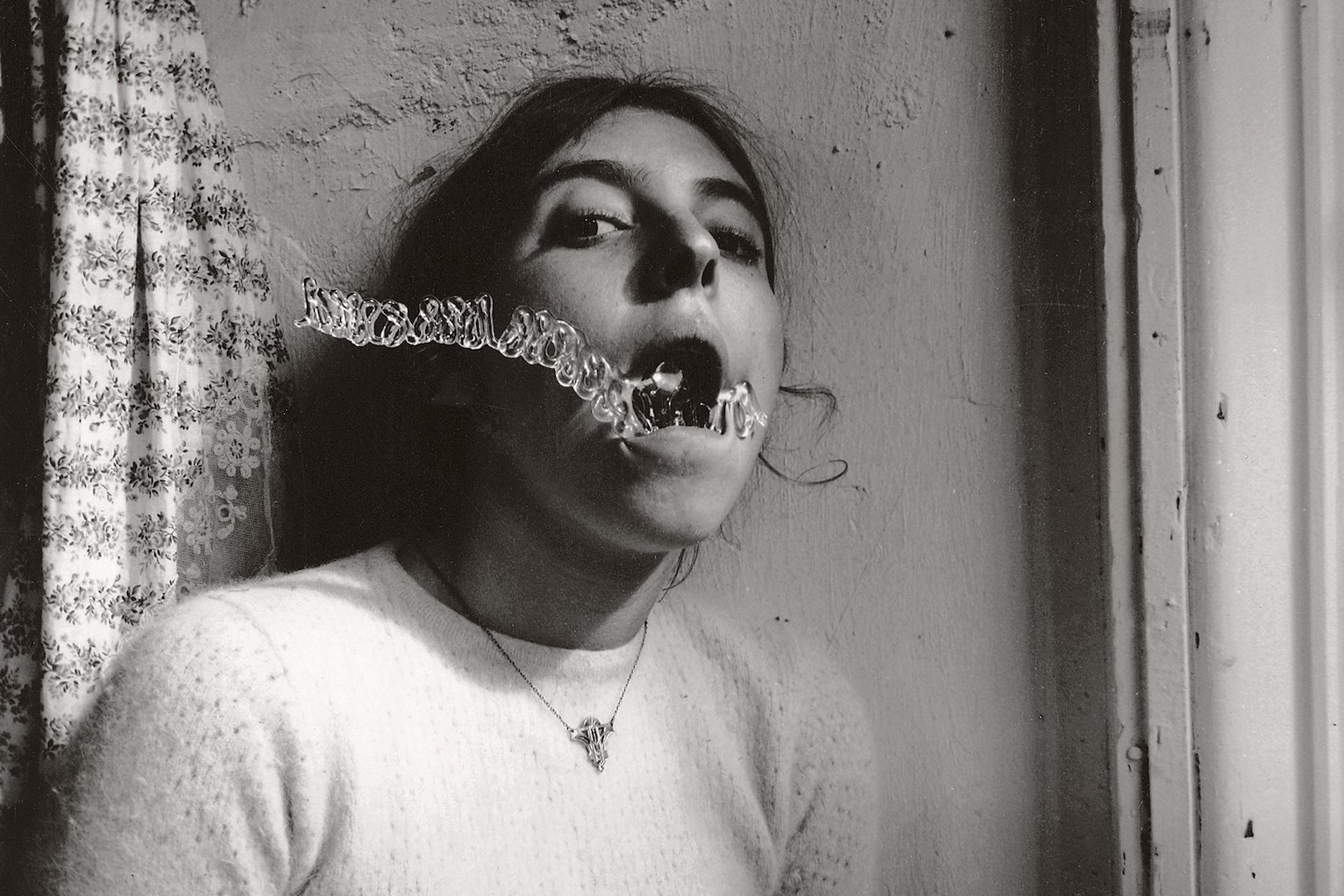We speak to Paul Maheke about his current exhibition at London’s Chisenhale Gallery and the disparate influences that inform his work
“My understanding of identity is very much informed by third wave feminism and the idea of the personal being political,” explains Paul Maheke. “But then, the other central focus of my work is also trying to break free from the representational realm – especially in connection with identity politics – and how we move forward from this notion. How can we look at the representation of identity in other ways?”
The 33-year-old, France-born artist, who is now based in London, utilises movement, installation, sound and video to re-articulate the representation of queer, black bodies. Maheke is best known for his performance work in which he appears as a central figure in the throes of dance, often invoking the atmosphere of a nightclub – a cultural and historical space synonymous with the nurturing of LGBTQ+ communities. “My experience of dance in clubs has also really informed my way of looking at the body as a political entity and how we can channel the body to engage in different modes of communication, other than just the voice,” he says.
The artist’s latest work – titled A fire circle for public hearing – is currently on display at London’s Chisenhale Gallery. The result of a three-month residency in the Dominican Republic, the exhibition is comprised of three daily performances choreographed by Maheke, set against the backdrop of an immersive installation. Here, he discusses how he combined the disparate influences of Bruce Nauman and Michael Jackson to form an entirely new narrative and his plans for the future.
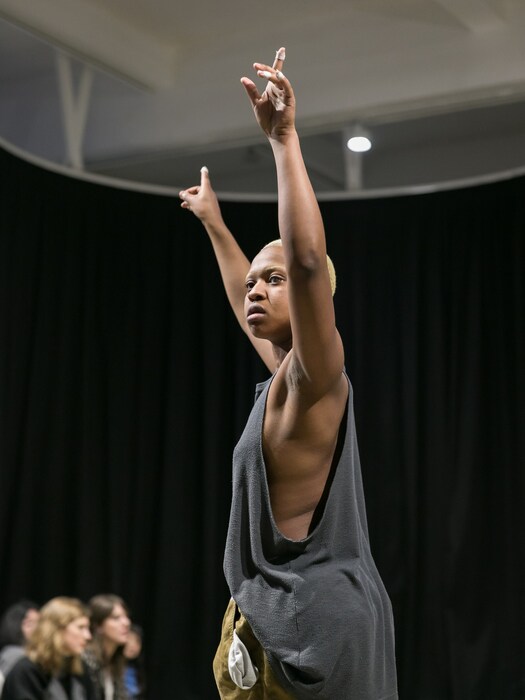
On establishing his practice...
“I grew up near Paris, and I studied in France too. When I was 18, I got accepted to art school and received a degree in etching. I wanted to become a medical illustrator, actually. Although it seems far away from what I am doing now with my work, I suppose there are similarities in that both involve the body. One of my tutors was a French contemporary artist, and she suggested that I apply to National School of Arts of Paris-Cergy to undertake a five-year fine art degree. The course has a reputation for being very experimental and conceptual. So I was quite interested in that, because it was transdisciplinary. Even when I was solely making drawings, I was already conceptually concerned with three-dimensional space. I graduated from this course in 2011, and then moved to Montreal before getting accepted onto London’s Open School East in 2015 – I’ve been in London ever since.”
On dance...
“Dance has been really important throughout my life. I never trained as a dancer or anything, but have been doing it since I was a kid. At one point I even dreamt of becoming a choreographer. It’s only in the last three to four years that I started to implement dance in my work, because I thought that it would be an interesting way in which to bring a visceral bodily action to my work – since my practice is very much concerned with the body and identity. It was at this point that everything began to make sense for me. It also coincided with the moment where I started to appear in performances myself. Before then, I was producing work that took the form of objects that I would leave in public spaces. I was really interested in the existence of the art object without an audience, which is very different to what I’m doing now, where the work very much involves an audience.”
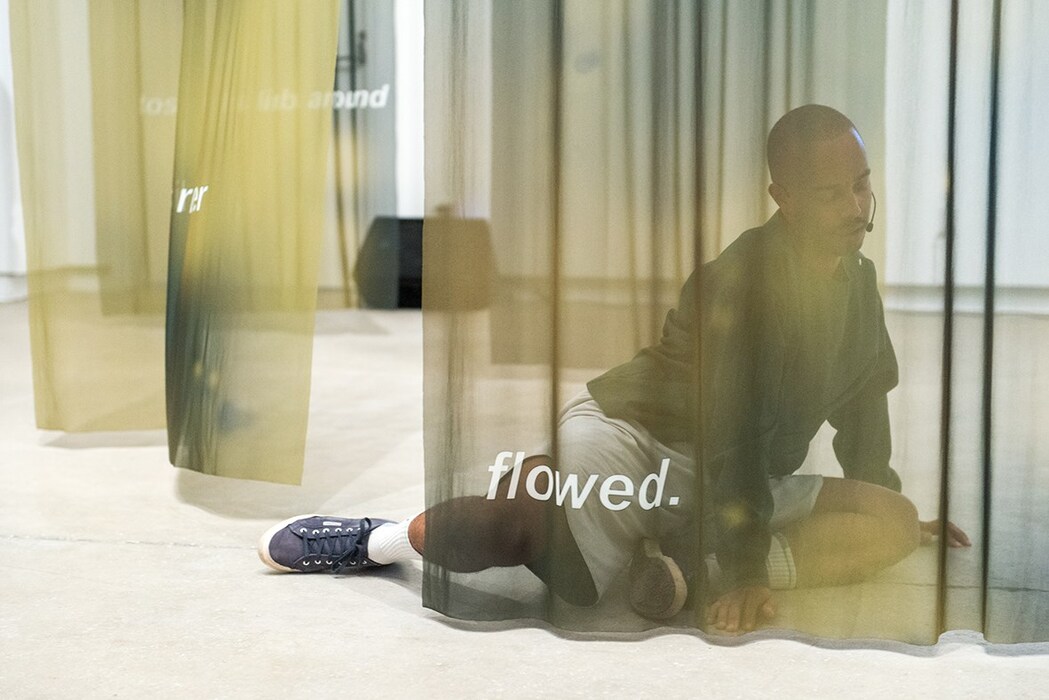
On a collision of influences...
“My influences and research have shifted over the years. I tend to investigate forms of dance that contribute to the emancipation of marginalised bodies and narratives. It was mainly focused in the US; so krump and voguing and those types of movements. But then I started to research a little bit more and tried to find a way of speaking from a European perspective too, using a mixture of the influences that I grew up with. These range from Michael Jackson to Anne Teresa de Keersmaeker to contemporary figures such as Ligia Lewis and Dana Michel. Mostly, I am interested in movement that resonates with some sort of social understanding of the world and a collision of things that are not necessarily obvious, from which emerges a new dialogue. For example, that’s how I worked when producing A fire circle for public hearing at Chisenhale; bringing together elements that would refer both to Michael Jackson and Bruce Nauman, but these two references then meeting in a body of someone identifying as a woman, subsequently altering the discourse around masculinity.”
On sound...
“I started to work with sound back when I had my show at the South London Gallery in 2016, titled I Lost Track of the Swarm. I invited DJ NKISI from Non Worldwide to collaborate with me on a soundtrack that would be featured in the show. Similarly, the piece I performed at Tate Modern for Ten Days, Six Nights in 2017 – called Mbu – included sound formed from clips I found on the internet, that I then compiled, remastered and remixed. For the Chisenhale show it was a very different process. I invited Sophie Mallett – an artist and friend of mine who I’ve worked with in the past and met at Open School East – to compose a one-hour long soundtrack that would accompany the performances, but also occupy the space while the performers were not there. I wanted something quite epic, with a strong sense of narrative. So she worked with repetition and the classic musical pattern of the sonata. My musical influences themselves are as random as the choreographers I mentioned before. Mykki Blanco has been someone who interests me; not only because of his mixture of punk and club and hip-hop, but Mykki’s social position as a voice for queer people of colour and HIV positive individuals. But then there’s also someone like the late Pauline Oliveros, who I listen to a lot. She was also queer, but her level of queerness maybe less visible than in Mykki’s. The sound in my work never refers to these people directly, but they are always there in spirit.”
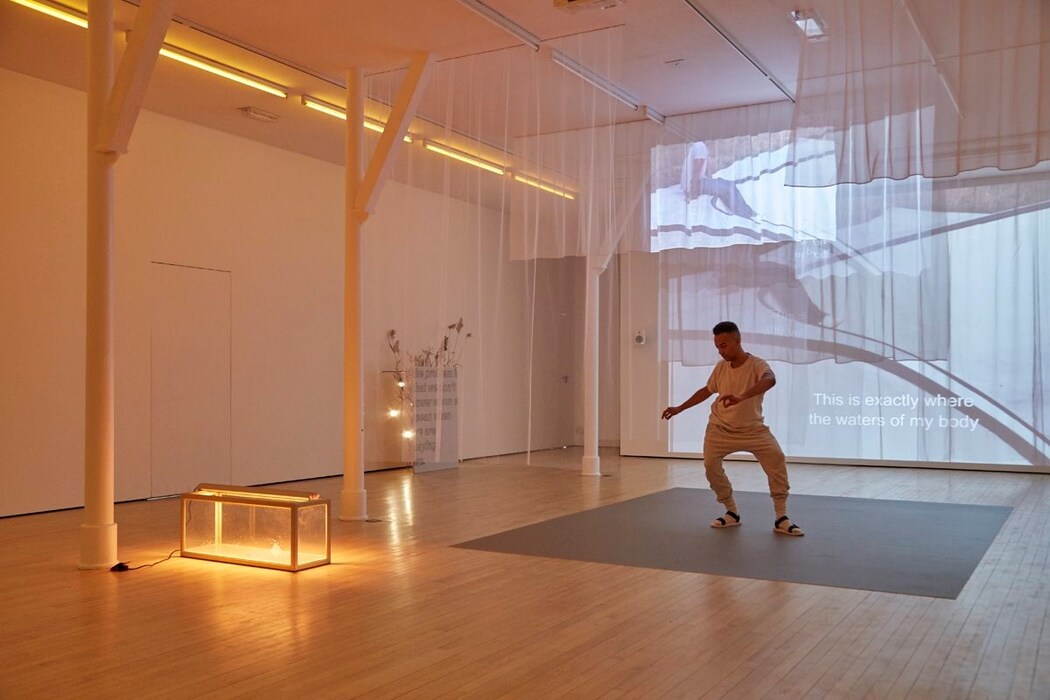
On future projects...
“The Chisenhale show is coming to an end, and I am working towards several other exhibitions and performances at the moment, mainly in Europe and the US. The most recent project is a collaboration with my two siblings, who are not artists. For this, I invited my little sister, who is a psychoanalyst, and my little brother who is a digital archivist – and also a musician – to collaborate with me. The piece investigates Kindoki, a form of witchcraft from where our father is from in the Democratic Republic of Congo. Here, we combined my sister’s research around the figure of the child witch, with sound by my brother and dancing by me. We first performed it last week in Brussels, and it is next going to be presented at Centre Pompidou in Paris on the 10th of June.”
A fire circle for a public hearing is open at Chisenhale Gallery, London until June 10, 2018. Daily performances start at 3pm throughout the duration of the exhibition and last for 45 minutes.

